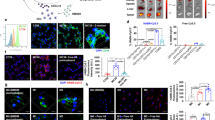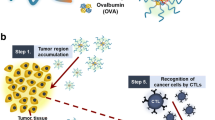Summary
100%, 75%, 50%, 25% and 12.5% oxidized dextran T10 (Dex T1o) were used as intermediate carriers for conjugating drug daunorubicin (DNR) and antibody anti-human thymocitic globulin (AHTG), to form different immunoconjugates, AHTG:Dex:DNR. It was demonstrated that the conjugate with 25% oxidized Dex T10 as intermediate carrier linked more DNR molecules than the others. The degree of its substitution was 10–11 moles of DNR per mole of AHTG. Moreover, because the amount to reducing agent sodium borohydride (NaBH4), required for the reduction reaction, was relatively small, its damaging effect on AHTG and DNR was lessened accordingly.
The antitumor effect of AHTG: Dex: DNR in vitro was tested by using 24-h cytotoxicity assay, with CEM as target cell. Cytotoxic effect of the conjugate was proven and the LD56 was 10.68 μg/ml. However, it showed only slight cytotoxic effect on non-target cell K562. When 10 min cytotoxicity assay was performed to show the specific tumor-killing effect of the conjugate, it revealed an obvious cytotoxic activity toward CEM, with the LD50 being 14.79 μg/ml, but hardly toward K562. These results suggest that AHTG:Dex:DNR possesses specific cytotoxic effect.
Similar content being viewed by others
References
Hurwitz E, et al. Site-directed chemotherapy with a drug bound to anti-idiotypic antibody to a lymphoma cellsurface IgM. Int J Cancer 1983;31:745–8.
Tsukada Y, et al. An anti-α-fetoprotein antibody-daunorubicin conjugate with a novel poly-L-glutamic acid derivative as intermediate drug carrier. J Natl Cancer Inst 1984:73: 721–9.
Bernstain A, et al. Higher antitumor efficacy of daunomycin when linked to dextran: in vivo and in vitro studies. J Natl Cancer Inst 1978;60:379–84.
Hurwitz E, et al. The covalent binding of daunomycin and adriamycin to antibodies, with retention of both drug and antibody activities. Cancer Res 1975; 35:1175–81.
Hurwitz E, et al. The effect in vivo of chemotherapeutic drug-antibody conjugates in two murine experimental tumor systems. Int J Cancer 1978;21:745–55.
Arnon R, Sela M. In vitro and in vivo efficacy of conjugates of daunomycin with anti-tumor antibodies. Immunological Res 1982; 62:5–27.
Ghose TI. et al. Preparation of antibodylinked cytotoxic agents. Methods Enzymol 1983;93:280–333.
Gallego J, et al. Preparation of four daunomycin-monoclonal antibody 791 T/ 36 conjugates with anti-tumor activity. Int J Cancer 1984;33:737–44.
Levy R, et al. The specific cytotoxic effects of daunomycin conjugated to antitumor antibodies. Cancer Res 1975;35: 1182–6.
1981
Deguchi T, et al. Potential therapeutic effects of adriamycin-monoclonal anti-prostatic acid phosphatase antibody conjugate on human p rostate tumor. J Urol 1987;137:353–8.
Author information
Authors and Affiliations
Rights and permissions
About this article
Cite this article
Dong-hua, Z., Jin-zhi, T., Guan-xin, S. et al. Preparation of AHTG-DNR conjugates and their antitumor effect in vitro. Journal of Tongji Medical University 10, 235–239 (1990). https://doi.org/10.1007/BF02887937
Issue Date:
DOI: https://doi.org/10.1007/BF02887937




